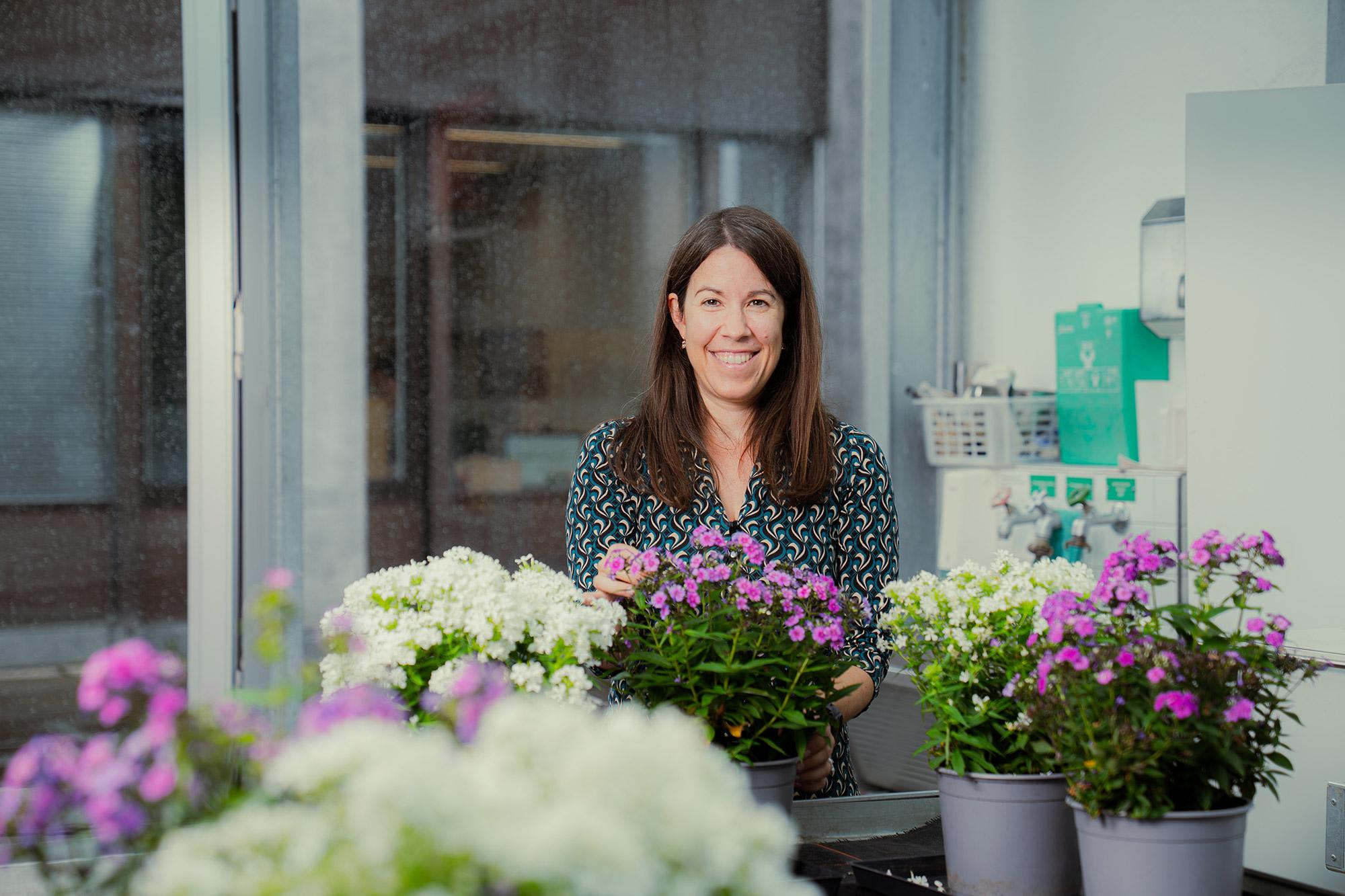Prizewinner Anna Feller researches biological matchmaking

This year's Marie Heim-Vögtlin Prize goes to the evolutionary biologist Anna Feller. The SNSF is honouring her for her innovative research into speciation and biodiversity.
If you want to understand how biodiversity is generated and maintained, you also need to know what prevents closely related species from reproducing with each other. Doing so would lead to the mixing of their genetic material and potentially to the disappearance of species.
Evolutionary biologist Anna Feller is researching precisely this question. She initially focussed on the species-rich family of African cichlids before turning her attention to North American Phlox wildflowers. She researched these species as part of an SNSF Postdoc.Mobility fellowship at Harvard University. She will receive this year’s Marie Heim-Vögtlin Prize, endowed with 25,000 Swiss francs, for her work. The award ceremony will take place on 25 November at ETH Zurich.
Two approaches generate a clearer picture
The herbaceous Phlox species grow in prairie areas with overlapping geographical distribution – in other words, they sometimes live right next door to each other. Nevertheless, they remain clearly distinguishable species. Feller investigated the reasons why, such as different flowering and pollination times or differences in the structure of the reproductive organs. She focussed on seven species, which she compared in all pair combinations. This allowed her to show, for example, that differences in the size of the reproductive organs can form a mechanical barrier to prevent reproduction with closely related Phlox. (*)
What is innovative about Feller's work is that she combines these crossbreeding experiments in the greenhouse with genetic analyses of wild-growing phlox plants. The combination of the two approaches makes it possible to challenge an assumption that has hardly been tested to date: Do experimentally measured barriers really provide reliable information about how much gene flow takes place in nature?
Plenty of material for further research
For her work, the researcher also spent weeks travelling in prairie areas to collect plant material – both for genetic analysis in the laboratory and for cultivation in the greenhouse. “This was important in order to get a feel for the habitats in which the species are found today,” says Feller.
When the results were analysed, it became apparent that the two approaches often matched up well. In species pairs with strong experimentally measured barriers, there is often little or no evidence of gene flow. But there are also exceptions: “In some pairs, despite strong barriers, I was able to show that there is or has been genetic exchange,” says Feller.
The researcher does not yet have an explanation for these surprising results. However, they indicate that the combination of both aspects is important if we want to understand reproductive isolation more precisely, which in turn helps us understand how biodiversity develops and is maintained.
A scientist despite her own doubts
The fact that Anna Feller has now been honoured for her excellent research shows that a later entry into science can also lead to a successful research career: The now 41-year-old initially worked as a primary school teacher, and enjoyed it, she says. But she never let go of her childhood dream of becoming a biologist. Despite her doubts as to whether she was up to the demands of the natural sciences, she enrolled at the University of Bern. "When I think back to my school days, boys were the maths heroes. Probably because they were more encouraged than us girls,” she says, “but I said to myself: I'll try to get through the first year. And if that works, I'll keep going." She stayed on – successfully, as we now know.
What advice would she give students today? "That talent for maths, chemistry or biology doesn't depend on gender. You can be good at anything that interests you." The fact is, however, that professorships in the natural sciences are still dominated by men. What helped her in her career? "I actively shaped my environment and looked for supportive female mentors and role models. That gave me stability." Her advice to other women: “Choose your team carefully and network – you don't have to do it alone”
After her stay at Harvard University, Feller returned to Switzerland with an SNSF Return Grant. She is currently carrying out her research in the Ecological Plant Genetics group at ETH Zurich – and would like to focus on alpine plants next.
Award for excellent female researchers
The SNSF awards the Marie Heim-Vögtlin (MHV) Prize each year to an outstanding woman researcher. Winners are inspiring role models whose careers progressed significantly thanks to a grant from the SNSF. Since 2020, the prize has been awarded to former female grantees of the MHV, Doc.CH, Postdoc.Mobility, Ambizione and PRIMA funding schemes.
The MHV Prize was named after Marie Heim-Vögtlin, who became the first Swiss woman to study medicine when she was admitted to the University of Zurich’s medical faculty in 1868. On completing her studies, she opened a gynaecological practice, where she continued practising after giving birth to two children. She is regarded as one of the pioneers in the struggle to give women access to higher education.
- Image 1 for editorial use (horizontal): Anna Feller is the winner of the Marie Heim-Vögtlin Prize 2025. © Sina Lou Ravasio / SNSF (JPEG)
- Image 2 for editorial use (vertical): Anna Feller is the winner of the Marie Heim-Vögtlin Prize 2025. © Sina Lou Ravasio / SNSF (JPEG)
- Video
- The project on the SNSF Data Portal
- Prize ceremony programme (PDF)